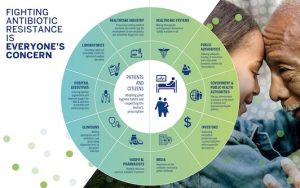Transforming wound care: Enzymatic debridement and the future of healing

Patients with slowly healing ulcers often experience morbidity and a decrease in their quality of life. This is particularly prevalent in patients with diabetes who are prone to infections, sepsis, limb loss and death; neuropathic ulcers in this group can be as serious as some cancers. Despite the need for effective advanced therapies, due to the chronic and often toxic milieu of these ulcers, the field of wound care has seen only a paucity of advancement over the past two decades. Over the last 25 years, the sector has witnessed very few FDA approvals for innovative treatments through the premarket approval (PMA) or Biologics License Application (BLA) processes with many gaining approval or regulation through 510K or homologous pathways leaving practitioners with limited evidenced-based options.
Meanwhile, recent advancements in enzymatic debridement, particularly utilizing topical bromelain, are paving the way for transformative therapies that hold the promise of faster debridement, wound healing and improved patient outcomes.
Addressing Chronic Wounds and Biofilm Bacteria
Chronic wounds, defined by their prolonged healing time and resistance to conventional treatments, represent a significant burden on patients and healthcare systems alike. The intricate interplay of factors, including impaired vascularization, underlying comorbidities, and bacterial infections, often contributes to the persistent nature of these wounds. Debridement represents the centerpiece leading to appropriate wound bed preparation. However, traditional debridement methods, such as sharp debridement, face limitations in addressing the unique challenges posed by chronic wounds, necessitating innovative approaches replace the standard of care.
Chronic cutaneous ulcers, often present in patients with diabetes, are frequently characterized by biofilm bacteria and pose a significant challenge by fostering chronic inflammation. Biofilm bacteria, resistant to traditional treatments, often hinder the healing process. There is evidence to support the hypothesis that treatment, with topical bromelain-based enzymatic debridement could effectively and quickly aid in the disruption of the polysaccharide covering eg. Glycocalyx ultimately decreasing pathogenicity. Collagenase, the lone FDA-approved enzymatic debridement product since 1956, has been the reliable yet time-consuming solution. However, the need for an alternative becomes evident, particularly when considering the extended debridement times and the absence of significant antibacterial effects against biofilm bacteria.
The Bromelain Enzymatic Debridement Solution
Bromelain-based enzymatic debridement may significantly reduce biofilm and inflammation, offering a potential solution to the stagnation in chronic wound treatment. Bromelain, derived from the pineapple stem, brings a multifaceted approach to wound care with proven anti-inflammatory, antibacterial, and fibrinolytic effects, facilitating debridement while also stimulating angiogenesis, promoting robust granulation tissue
formation.
In the recently published PharmEx Phase II study, the innovative bromelain-based enzymatic debridement agent, EscharEx, demonstrated remarkable efficacy and safety in the treatment of chronic wounds. Explored in 12 patients grappling with venous leg ulcers (VLUs) or diabetic foot ulcers (DFUs), EscharEx showcased a dual impact on wound debridement and bacterial control. Seventy-percent of patients achieved complete debridement within 5.5 days, emphasizing the agent’s swift and comprehensive action compared to the 59 days that Collagenase required to achieve
similar parameters.
An average 35 per cent reduction in wound size over a 2-week follow-up period further highlighted a potent role in promoting tissue regeneration. The agent proved instrumental in biofilm elimination, reducing biofilm in all positive patients at baseline, and showcased a remarkable 64% reduction in bacterial load, validating its infection-fighting capabilities. These findings underscore the opportunity for Bromelain to address the intricate challenges associated with chronic wounds, offering hope for enhanced patient outcomes.
Transitioning to Home-Based Wound Care
Looking to the future, wound care is shifting from clinic-based treatment towards a home-based model. Ensuring accessibility to quality care is crucial as individuals face barriers due to factors like geography, transportation, or health limitations. Individual patient preferences, particularly among those managing chronic or delicate conditions, are also driving the move to home-based care. This shift will ultimately create a more conducive healing environment and prove cost-effective by cutting clinic visits, relieving economic burdens on both patients and the healthcare system.
A key advantage of enzymatic debridement t is that it can be applied at home. This can be transforming for those who face logistical challenges or are too ill to return to the clinic for treatment, or are not candidates for sharp debridement due to poor vascularity or other underlying comorbidities. The ability to treat wounds effectively at home may not only accelerate the healing process but also offer a more cost-effective alternative to traditional clinic-based treatments.
Further Innovations in Wound Care
The future of wound care is not limited to enzymatic solutions alone. Other technological innovations are emerging as valuable allies in the battle against chronic wounds. Diagnostic tests for protease activity and bacterial loads, along with devices like molecular florescence and microvascular testing, enable healthcare professionals to make more informed decisions at the bedside, reducing reliance on
laboratory analyses.
One of the most promising trends is the potential for replacement of antibiotics with genetic markers. This innovative approach could lead to a targeted therapy cocktail, addressing infections more effectively and mitigating concerns around antibiotic resistance. The prospect of genetic markers signals a paradigm shift in how we combat infections and underscores the need for continued exploration in wound care research.
The wound care industry is evolving, and enzymatic debridement is at the forefront of this revolution. Bromelain-based solutions offer the treatment that practitioners need, delivering faster healing times, reduced biofilm, supporting robust granulation tissue, and transitioning towards home-based care. As we step into this new era of wound care, the combination of enzymatic therapies and technological advances hold the key to unlocking unprecedented possibilities for patients and healthcare
professionals alike.
By Dr. Robert Snyder
Dr. Robert J. Snyder (DPM, MSc, MBA, CWSP, FFPM RCPS) is Dean, Professor, Director of Clinical Research and Fellowship Director in Wound Care and Research at Barry University School of Podiatric Medicine. He is certified in foot and ankle surgery by the American Board of Podiatric Surgery and is also a board-certified wound specialist. Dr. Snyder is past-president of the Association for the Advancement of Wound Care and past-president of the American Board of Wound Management.








